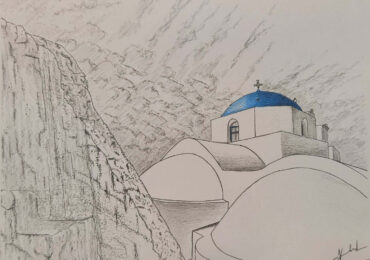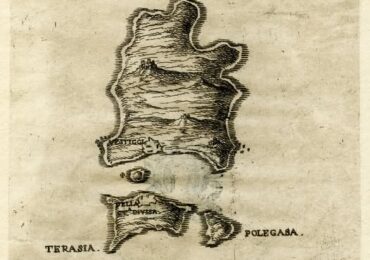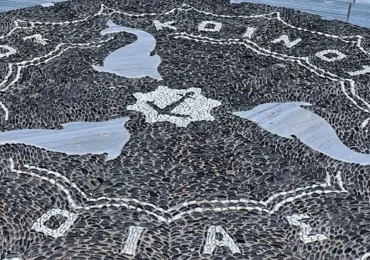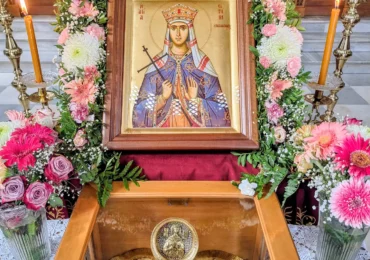Whispers of Santorini: The Histories Behind Village Names
History Behind Santorini Village Names

((c) credit to Christophoros Karamolegos)
Santorini is more than a feast for the eyes — it’s a tapestry of whispered legends, long-lost voices, and names that hold the island’s heartbeat. Every corner, from a wind-swept clifftop to a sleepy inland lane, carries a story. Some are etched deep into history, born of pirate ambushes, sea trade, and volcanic rebirth. Others belong to beloved places that may no longer exist, yet linger on in the way locals give you directions — like old friends pointing the way home.
Walk far enough and you’ll hear them, these names the maps have forgotten or never remembered to begin with.
Each one’s a doorway into Santorini’s soul.
Oia & Its Timeless Quarters
Oia is the island’s shining jewel, but beneath the famous sunsets lies a mosaic of memories and meanings.
-
Apanomeria – Once the name for Oia’s upper, northernmost quarter, Apanomeria comes from “the upper side” (Apano Meria), a term used across the Cyclades for elevated districts. In Oia’s golden age of the 19th century, it carried a touch of pride — even grandeur. Here, Ammoudi Bay wasn’t just a sunset dinner icon; locals called it the “Acropolis of Wine Shipping.” Ironically, the ancient Oia lay far to the south, where Kamari now stands.
-
Panagia Platsiani – At the village heart stands the “Virgin Mary of the Splashing Waves.” Her name springs from the playful Greek plats-plats — the splash of water. Listen closely, and you can almost hear the sea kissing the shore in her honor.
-
Shipowners’ Quarter & Faros / Fanari – Mansions of sea captains line these lanes, reminders of fortunes carved by the wind. Once, Oia even had its own lighthouse (Faros), lost to the great earthquake of 1956 but still lingering in street names and memories.
-
Kydeion Church – “The Virgin Mary of Perils”, a beacon for sailors returning through storm and darkness.
-
Lotza – Today, a beloved terrace restaurant. In the past, “Lotza” referred to the whole neighborhood, a name that drifts from the Venetian loggia.
-
Baxedes – A wild, wind-whipped beach whose name, from the Turkish baxedes (“gardens”), feels almost like a joke — one of the island’s rare Ottoman echoes.
Imerovigli
Its name carries both Greek and Latin roots — vigla and vigilare, the language of lookouts and guardians. Imerovigli was the sentry of the caldera, keeping watch from Skaros Rock for sails that might bring danger.
Theoskepasti – A little chapel clinging to the cliff, “Covered by God.” On certain days, the mist embraces it so fully that it seems to dissolve into the sky. Currently, Skaros might as well be called the “Proposal Rock”, for the amount of daring couples that go there to capture their special moments!
Karterados
Hidden in a fold of the land, Karterados takes its name from kartero — “to endure” or “to wait” or even “to ambush”. Once a refuge from pirates, it is now a haven of sunken lanes, archways, and chapels where time treads softly.
Kamari
Named for its lone surviving arch (kamara), Kamari remembers the Roman harbor that once thrived here. Today, it’s a seaside strip where the scent of salt mingles with summer nights and music drifting over the black pebbles.
Pyrgos
Pyrgos, “the tower,” crowns a hill at the island’s heart. Ironically, no tower stands alone here. Its fortress walls, the kastelli, were once the village’s shield against raiders. Climb to its summit, and the whole island lies at your feet — sea, vineyard, and sky in every direction.
Emporeio
Emporeio’s name means “trade,” and for centuries this was the island’s bustling marketplace. Called Nimborio or Enborio in older times, its walled kastelli still weaves a maze so tight you could wander for hours — and happily lose yourself.
Akrotiri
The very word “Akrotiri” — a tip of land, a cape — promises views that stretch forever. Here lies the Bronze Age city, frozen in volcanic ash. And beyond, the lighthouse (Faros) that has kept watch over the southern cliffs for more than a century.
Thirassia
Across the caldera, Thirassia is Santorini’s quiet sister — once a part of the same island before the great eruption tore them apart. One legend says it was named for King Thiras’ daughter, who was gifted the island as her home.
Names That Refuse to Fade
Some names live on even after their places change or vanish:
-
Meksikaniko – A restaurant that closed in 2020, yet still marks a spot in conversation.
-
Yellow Donkey – The island’s first disco, where the nights of the 70s and 80s spun out under the stars.
-
Amerikanos Stairways – Steps rising toward Oia’s promenade, remembered in mosaic.
Why These Names Stay With Us
The names of Santorini are like threads that stitch the island’s past to its present. They carry the salt of the sea, the echo of church bells, the hush of vineyards at dusk. Some were born in the age of pirate raids and merchant fleets; others are as modern as a shuttered café whose name still guides strangers through winding streets.
Even the island’s ancient nicknames tell their own truths. To call her Kallisti — “the most beautiful” — may have sounded like a dream in years when a glass of cow’s milk was a rare luxury. Yet beauty here has always been more than comfort; it is the kind that inspires legends and launches a thousand ships.
And sometimes, the stories choose their own ending. The church of Santa Irini was simply the first landmark the Latin sailors spotted from the water — yet centuries later, she became Santorini’s patron. This year, the island welcomed the holy relic of Saint Irene the Great Martyr to the Church of Evangelismos in Emporio, sealing a bond that began as a chance encounter.
If you let them, these names will guide your steps — and your heart.







